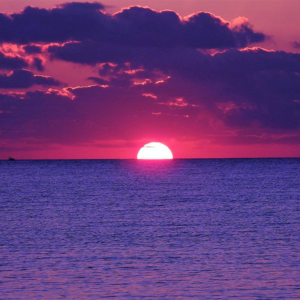Deathlock (1991-1994)
Marvel Comics
I've always been a fan of the 'Deathlok' character from Marvel comics, starting with his first appearance in 'Astonishing Tales' No. 25 (cover date August 1974). Deathlok, created by Rich Buckler circa 1972, predated Martin Caidin's 'Cyborg' as an iconic cybernetics - based superhero.
Buckler's Deathlok, which appeared in 'Astonishing Tales' from 1974 to 1976, was a marked departure from the Marvel superhero paradigm. Deathlok was set apart from the Marvel universe, in a dystopian, 1990s USA marked by social anarchy and a military-industrial complex run riot.
The stories had a bleak, existential quality and featured content that pushed the boundaries of the Comics Code as far as violence was concerned; Deathlok would just as soon shoot somebody, as opposed to knocking them out for later incarceration.
In 1990 Marvel published a four-issue miniseries, titled 'Deathlok', and the response was encouraging enough for the company to relaunch the character in his own eponymous series, which ran for 34 issues, from April 1991 to April 1994.
The Great Comics Boom of the 1990s then was underway. It's worth noting that, according to Jason Sacks and Keith Dallas in their book 'American Comic Book Chronicles: The 1990s,' in November of 1993 Marvel produced 128 comic books, compared to 92 comics for November 1992 (page 117). Anything that Marvel thought might sell, got packaged and sent to the stores.
Last summer I picked up the entire 1990s run of Deathlok (including the two Annuals) for a very affordable $15.
Also worth noting is the 2015 trade paperback, 'Deathlok: The Souls of Cyber-Folk,' which compiles the first 15 issues, and one Annual, from the 1991 series.
Unlike the 1974 Deathlok, the 1991 version was part of the Marvel universe, a move which allowed for well-known Marvel heroes and villains to make guest appearances (and boost circulation).
Whereas Luther Manning, the original Deathlok, was somewhat ambiguous in terms of his racial identity, the new Deathlok, Michael Collins, was black. Writers Denys Cowan and Dwayne McDuffie were black as well. Black superheroes and creative teams were starting to gain momentum in the early 1990s, and in 1993, Cowan and Mcduffie would go on to form Milestone, the first black-owned comic book publishing company, which issued its books through DC comics.
Reading the 1991 series, I have a mixed reaction. On the one hand, the series definitely has some energy to it, with plenty of segments of furious action that recall the tenor of the original series. On the other hand, Cowan and McDuffie, and later, writer Gregory Wright, are insistent that Michael Collins exhibits a pacifistic attitude, which deprives the character and setting of the edgy quality of the original series. After a while, the humanistic homilies that drive the Michael Collins Deathlok get tiresome.
In the early 1990s cyberpunk was a growing pop culture motif and the Deathlok writers worked it into their story lines. Michael Collins was a computer expert prior to becoming Deathlok, and as the cyborg, he routinely would enter cyberspace for one reason or another. The artists did a reasonably good job of depicting this facet of the series.
One of the better story arcs involves a three-issue adventure in Wakanda, with the Black Panther fighting side-by-side with Deathlok to prevent a usurper from taking over the country
Looking through these 1990s comics, I'm struck by the various gimmicks and come-ons, such as foil-embossed covers, that were part and parcel of the comics boom of that era. It's also interesting to see that, in the 90s, artists and editors with a high-profile status were able to earn money via independent appearances at comics-related events.
Looking through these 1990s comics, I'm struck by the various gimmicks and come-ons, such as foil-embossed covers, that were part and parcel of the comics boom of that era. It's also interesting to see that, in the 90s, artists and editors with a high-profile status were able to earn money via independent appearances at comics-related events.
One area where these comics have not aged well is in the color schemes. Page after page of these Deathlok issues, like so many Marvel comics of the early 1990s, have remarkably ugly coloration. It's as if Pantone had a 'dogshit shades and hues' category, which Marvel was partial to.
To be fair, the crappy color was due in part to the decision by World Color in Sparta, Illinois, to switch from their old and failing letterpress equipment to 'Flexographic' printing, using rubber plates. Flexographic meant that Marvel and other publishers could continue to produce comics, at the cost of shittier print quality.
The result was panels and pages (like the ones below) where the colors make your eyes hurt......
Interestingly, as I was perusing these 1990s Deathlok issues earlier this Fall, Marvel released a 'Luther Manning.....Deathlok' one-shot comic as part of its commemoration of the character's 50th anniversary:
As the title indicates, this one-shot revives the original character and places him in the dystopian New York City of the 1974 incarnation.In keeping with the mercenary marketing philosophies that rule Marvel nowadays, this 50th anniversary issue had four different covers, designed to pry more cash from the fanboys. Needless to say, I resisted and just got the one book.....
When all is said and done, the 1990s incarnation of Deathlok is a readable, if not overly memorable, series. If you can find the comics for a reasonable price, and you like the franchise and science fiction-themed comics, then it's worth getting. I am not aware of any Marvel 'omnibus' in preparation that would collect the 34-issue run but if I do get word of such a production I'll post about it here at the PorPor Blog.


































.jpg)














